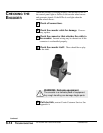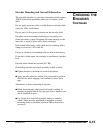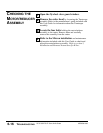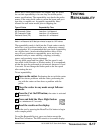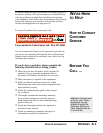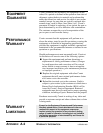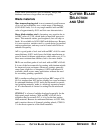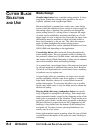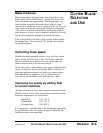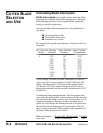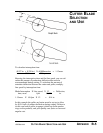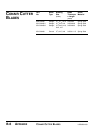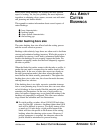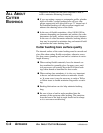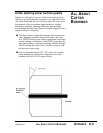
Blade Design
Straight-edge knives have a straight cutting surface. A chop-
ping action (which has cutting forces parallel to the cut) is
typically obtained with straight-edge blades.
Because the blade is mounted on a rotary arm, some slicing
action (which has additional force vectors at various angles to
the cutting edge) is obtained, but generally not through the
entire cutting action. If a slicing action is required, the angle
of attack can be modified by mounting the blade on a 30-45
degree angle as close to the cut site as possible. In many cases
the bushings must be modified to allow the blade holder to
have close proximity to the cut site. This offers the steepest
angle of attack throughout the entire cutting process.
Generally straight knives can be obtained in thicknesses from
0.004-0.060 inch depending on the application.
Curved-edge knives offer increased slicing throughout the
entire cutting action. They are generally used for cutting rub-
ber preforms, rubber hose, flexible foams, and other materials
that require slicing. Blade lubrication is often used to enhance
the cut and minimize blade and bushing buildup.
As a general rule, curved-edge knives offer improved cut qual-
ity on rigid materials if additional heat can be used. However
if used on cold rigid materials, curved knives have a tendency
to produce wavy or angled cuts.
A curved edge knife can sometimes cut larger cross section
profiles and tubing with the same horse power as a straight
edge blade. However, the use of a curved blade increases
product interruption. To overcome this effect, use a variable
speed rotary knife cutter to vary the blade speed to obtain the
desired cut quality.
Piercing blade (bat-wing, woodpecker) knives are specifi-
cally designed for cutting thin wall tubing. Their shape mini-
mizes penetration marks caused by the flattening action of the
blade prior to penetration of the extrudate. These are the most
expensive type of blade, and the most susceptible to breakage.
Because the point is exposed and not fully supported by the
bushings, it may deflect into the bottom of the bushing bore
and break off. For these reasons, piercing blade knives are
usually used as a last resort.
Some rigid materials require warming when this type of blade
is used because the impact of the point can cause cracking or
whitening.
CUTTER BLADE SELECTION AND USE UGE059/1003
B-2 APPENDIX
CUTTER BLADE
SELECTION
AND
USE



